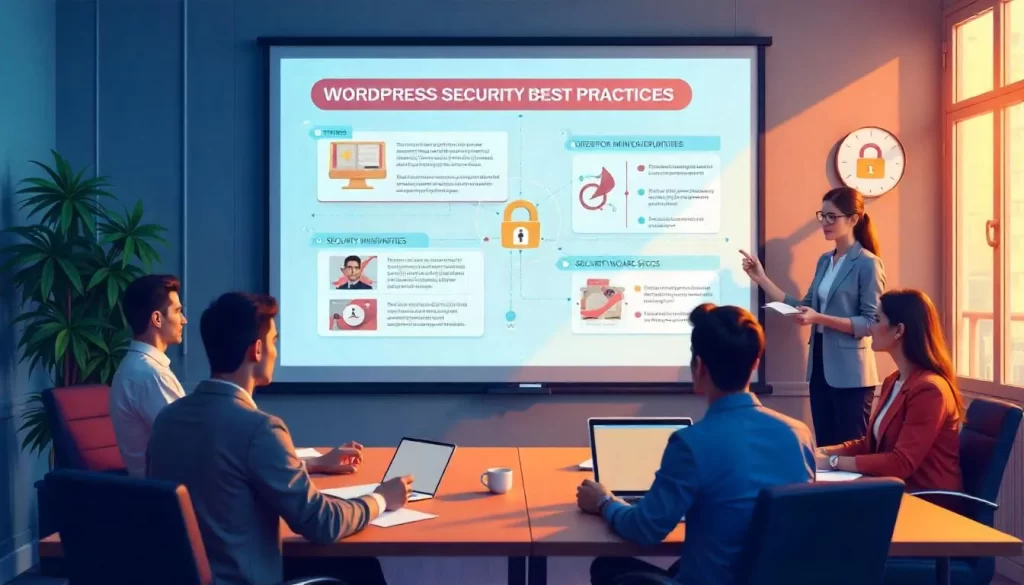What to Do When Your WordPress Website Has Been Compromised
If your WordPress website has been hacked, it can feel like an overwhelming experience. Your site might display strange behavior, unusual activity, or even be completely inaccessible. Hacking attacks are a common threat to WordPress sites, and they can range from minor inconveniences to significant security breaches, exposing your data or your users’ personal information.
Understanding how to fix a hacked WordPress website swiftly and efficiently is crucial to getting your site back online and ensuring that it remains secure moving forward. In this comprehensive guide, we’ll walk you through the steps to recover your WordPress site after an attack and, more importantly, how to prevent such hacks in the future.

Identifying Signs of a Hacked WordPress Site
Before you can begin the recovery process, it’s important to identify whether your WordPress site has been compromised. Below are some of the most common signs that your site may have been hacked:
Related Posts
Unusual Activity or Behavior
If you notice any unusual activity, such as sudden traffic spikes or a drop in site performance, it could indicate that your site has been compromised. Hackers often inject malicious scripts or links into websites to redirect visitors to external malicious sites, which might affect your traffic and user experience.
Unauthorized Changes or Content
Another sign of a hack is unauthorized changes to the content or layout of your website. For example, if you notice new posts or pages that you didn’t create, or if existing content has been altered or deleted, that’s a clear indication that your site may have been infiltrated.
Hackers sometimes insert malicious code that redirects visitors to phishing pages, advertises unauthorized products, or installs malware on users’ devices.
Downtime or Site Inaccessibility
One of the most evident signs of a hack is your website going down. If you suddenly find your website inaccessible or displaying a “403 Forbidden” or “500 Internal Server Error” message, it could be due to a hack that has impacted your website’s functionality. This could happen if the hacker has exploited your server, overloaded it, or altered your core files.
Steps to Fix a Hacked WordPress Site
Once you’ve confirmed that your WordPress site has been compromised, it’s important to take immediate action to prevent further damage. Below are the detailed steps you should follow to fix your hacked website:
Take the Site Offline to Prevent Further Damage
The first and most important step is to disconnect your site from the internet to prevent further damage. Taking your site offline can protect both your website and your users by stopping any ongoing malicious activities, such as the spread of malware or unauthorized data access.
You can enable maintenance mode or disable your site temporarily through your hosting control panel, or you can do it via a plugin. If your site is completely down, reach out to your hosting provider for assistance in disabling public access.
Change Passwords and Update Security Settings
Hackers often gain access to WordPress sites through weak passwords or insecure login credentials. Once you have taken your site offline, it’s critical to change all of your passwords:
- WordPress Admin Password: Change your WordPress login password immediately. Use a strong, unique password with a combination of uppercase and lowercase letters, numbers, and special characters.
- Database Password: Access your database and change the database password via your phpMyAdmin or through your hosting provider.
- FTP and cPanel Passwords: Change your FTP credentials and cPanel login details to prevent hackers from accessing the server.
- User Accounts: Check all user accounts and ensure that no unauthorized accounts have been created. Reset passwords for all users who have access to the admin panel.
Additionally, it’s a good idea to enable two-factor authentication (2FA) to add an extra layer of security for future logins.

Remove Malware and Restore from Backups
Next, it’s time to clean your site of any malware or malicious files. Use a security plugin such as Wordfence or Sucuri to scan your site for malware and vulnerabilities. These plugins can help you identify and remove harmful code, backdoors, or unwanted files that the hacker may have injected into your site.
Once the malware is removed, check your website’s core files and database. Hackers often hide malicious scripts in theme files, plugin files, or even in your wp-config.php file.
After removing the malware, restore your site from a recent clean backup. If you have a backup that was made before the site was hacked, use it to restore your website to its original state.
If you don’t have a backup, you’ll need to manually remove the malicious code and ensure that all files are secure before bringing the site back online.
Related Posts
Use Security Plugins to Scan for Vulnerabilities
Even after cleaning your site, there may still be vulnerabilities that hackers could exploit in the future. To further secure your site, install security plugins that offer features like firewall protection, login attempt limits, and real-time threat scanning.
- Wordfence: This plugin offers a robust firewall and malware scanner, along with real-time monitoring for suspicious activity.
- Sucuri: Sucuri offers a comprehensive website firewall, malware removal service, and security hardening tools.
These plugins will not only help you identify future vulnerabilities but also prevent further attacks from occurring.
Reinstall WordPress Core Files
Sometimes, malware or a hack may have altered or corrupted your WordPress core files. After you have removed the malware and restored your backup, it’s a good idea to reinstall the WordPress core files. You can do this easily by going to Dashboard > Updates > Reinstall Now. This will replace any core files that may have been compromised.
Make sure all plugins and themes are up-to-date as well, as outdated software is one of the primary reasons WordPress sites get hacked in the first place.
How to Prevent Hacks in the Future and Secure Your Website
While recovering from a WordPress hack can be a daunting process, it’s also an opportunity to strengthen your website’s security and protect it from future attacks. Regular maintenance, strong passwords, and using reputable security plugins are essential steps in safeguarding your WordPress site.
By following the steps outlined in this guide, you can restore your hacked WordPress site to its original state and prevent future breaches. Here are some final tips to secure your WordPress website going forward:
- Keep your WordPress core, themes, and plugins up-to-date.
- Regularly back up your website to restore it quickly in case of a hack.
- Use a web application firewall (WAF) to block malicious traffic.
- Enable two-factor authentication (2FA) to protect your login credentials.
- Periodically scan your website for vulnerabilities and malware.
Maintaining a secure WordPress website requires consistent effort, but by following best practices and staying vigilant, you can ensure that your site remains safe from hackers in the future.
Frequently Asked Questions
How do I know if my WordPress website has been hacked?
Signs that your site has been hacked include unusual activity, unauthorized changes, site downtime, or if users are redirected to malicious websites. You may also receive warnings from Google or your hosting provider.
What should I do if my WordPress site is hacked?
Immediately take your site offline to prevent further damage, change all passwords, remove malware using security plugins, and restore from a clean backup.
How can I prevent future hacks on my WordPress site?
Keep your WordPress core, themes, and plugins up-to-date, use strong passwords, enable two-factor authentication, and install a security plugin to protect your site.
How can I remove malware from my WordPress site?
Use a security plugin like Wordfence or Sucuri to scan and remove malware from your website. You may also need to manually check and clean files like the wp-config.php file.
Key Takeaways
- Act immediately when you notice your WordPress site has been hacked by taking it offline, changing passwords, and removing malware.
- Use security plugins to identify vulnerabilities and prevent future attacks.
- Regular WordPress updates and strong security practices are essential to prevent hacks.
- Restoring from a clean backup is one of the fastest ways to recover a hacked website.
